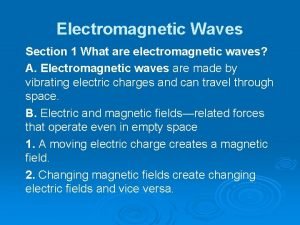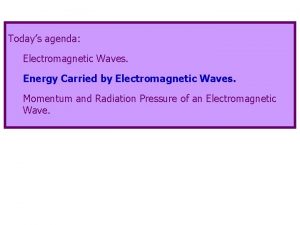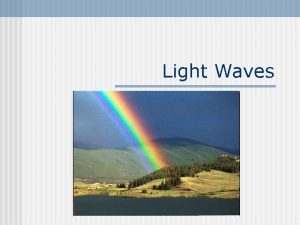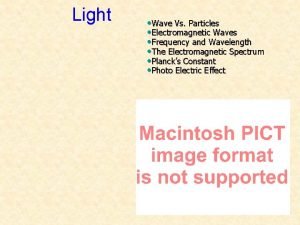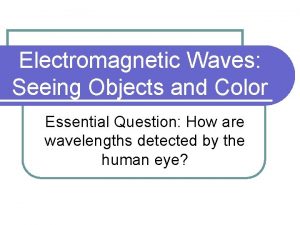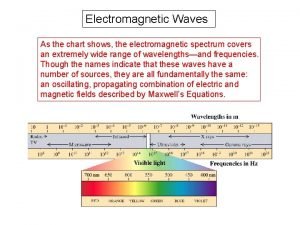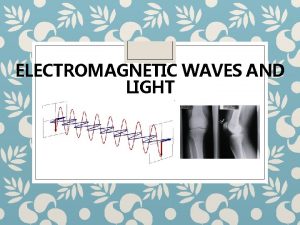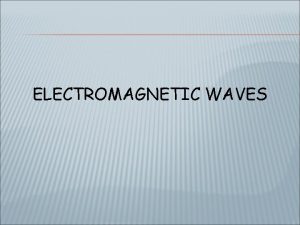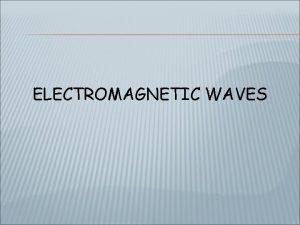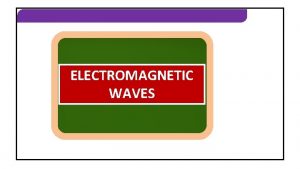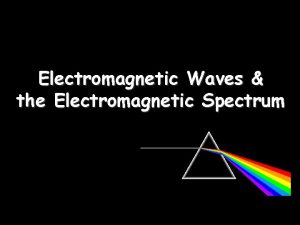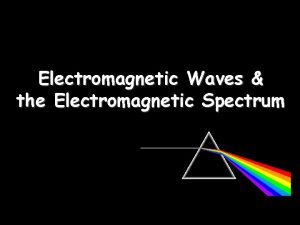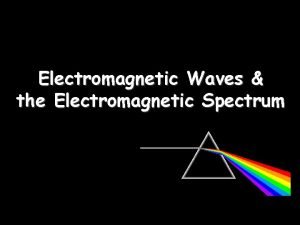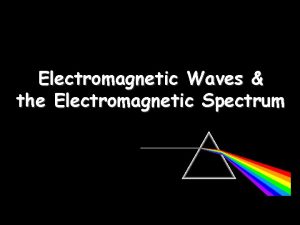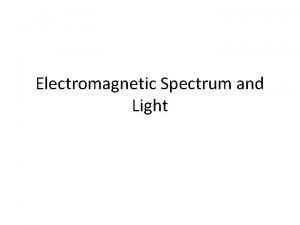Electromagnetic Waves Section 1 What are electromagnetic waves

















- Slides: 17

Electromagnetic Waves Section 1 What are electromagnetic waves? A. Electromagnetic waves are made by vibrating electric charges and can travel through space. B. Electric and magnetic fields—related forces that operate even in empty space 1. A moving electric charge creates a magnetic field. 2. Changing magnetic fields create changing electric fields and vice versa.


Electromagnetic Waves C. Electromagnetic waves are produced when an electric charge is vibrating.

Electromagnetic Waves D. Properties of electromagnetic fields—carry radiant energy 1. Frequency and wavelength—as frequency increases, wavelength decreases a. Frequency is the number of vibrations per second; measured in hertz. b. Wavelength is the distance from one crest to another and is measured in meters. 2. Wave speed—in the vacuum of space, 300, 000 km/s; electromagnetic waves slow as they travel through matter.


Electromagnetic Waves E. Waves and particles— difference not clear 1. Light can behave as a particle, a photon, whose energy depends on frequency. 2. All particles can behave like a wave

Electromagnetic Waves Section 2 The Electromagnetic Spectrum A. The entire range of electromagnetic wave frequencies is called the electromagnetic spectrum.

Electromagnetic Waves B. Radio waves—low-frequency electromagnetic waves with wavelengths from less than a centimeter to about 1000 meters 1. Microwaves—radio wave lengths of about 1 to 10 cm 2. Radar—radio waves bounced off an object to determine its speed and location 3. Magnetic Resonance Imaging (MRI)—radio waves produce an image of the inside of the body

Electromagnetic Waves C. Infrared waves—electromagnetic wave with a slightly higher frequency than radio waves; people feel it as thermal energy or warmth D. Visible light—has wavelengths between about 390 to 770 billionth of a meter; can be seen with the eye

Electromagnetic Waves E. Ultraviolet waves—have frequencies slightly higher than visible light; can damage skin 1. Ultraviolet light can kill bacteria. 2. Ultraviolet light can be absorbed by some fluorescent materials and released as visible light. 3. Ozone layer above Earth’s surface absorbs most of the Sun’s harmful ultraviolet waves.

Electromagnetic Waves F. X rays and gamma rays—ultra-highfrequency electromagnetic waves that can travel through matter, break molecular bonds, and damage cells 1. X rays are used to provide images of bones and to examine suitcases at airports without opening them. 2. Radiation therapy is used to kill diseased cells.






 Antigentest åre
Antigentest åre Mechanical waves and electromagnetic waves similarities
Mechanical waves and electromagnetic waves similarities Light waves are electromagnetic waves true or false
Light waves are electromagnetic waves true or false Mechanical waves and electromagnetic waves similarities
Mechanical waves and electromagnetic waves similarities Difference between electromagnetic waves and sound waves
Difference between electromagnetic waves and sound waves Mechanical waves and electromagnetic waves similarities
Mechanical waves and electromagnetic waves similarities Electromagnetic waves vs mechanical waves
Electromagnetic waves vs mechanical waves Mechanical and electromagnetic waves similarities
Mechanical and electromagnetic waves similarities Mechanical and electromagnetic waves
Mechanical and electromagnetic waves Section 1 what are electromagnetic waves
Section 1 what are electromagnetic waves Section 1 what are electromagnetic waves
Section 1 what are electromagnetic waves A health inspector is measuring the intensity of a sound
A health inspector is measuring the intensity of a sound Energy density for electromagnetic wave
Energy density for electromagnetic wave Electromagnetic waves characteristics
Electromagnetic waves characteristics Electromagnetic waves frequency
Electromagnetic waves frequency Electromagnetic waves: seeing objects and color
Electromagnetic waves: seeing objects and color Electro magnetic spectrum chart
Electro magnetic spectrum chart Electromagnetic powerpoint template
Electromagnetic powerpoint template









